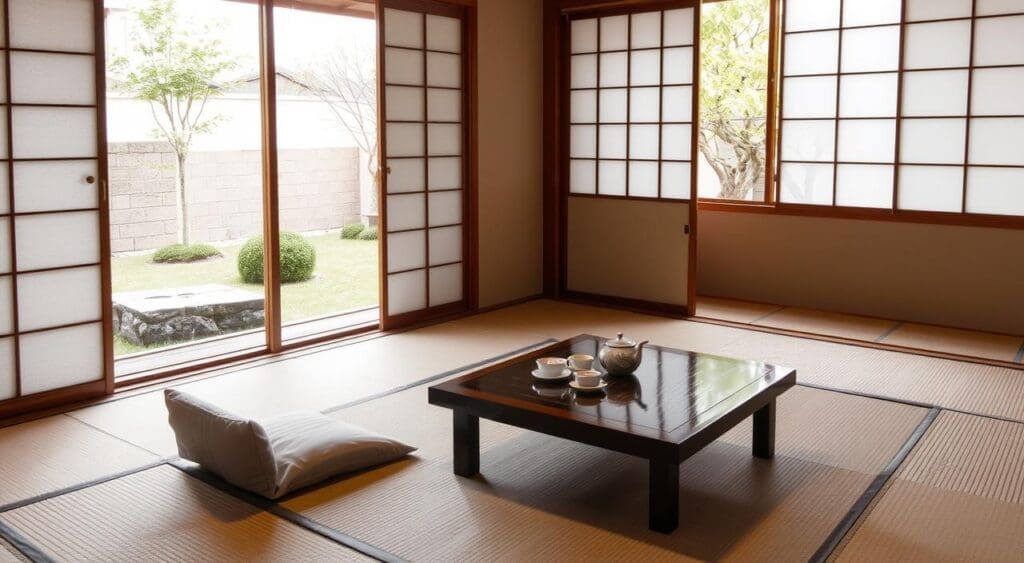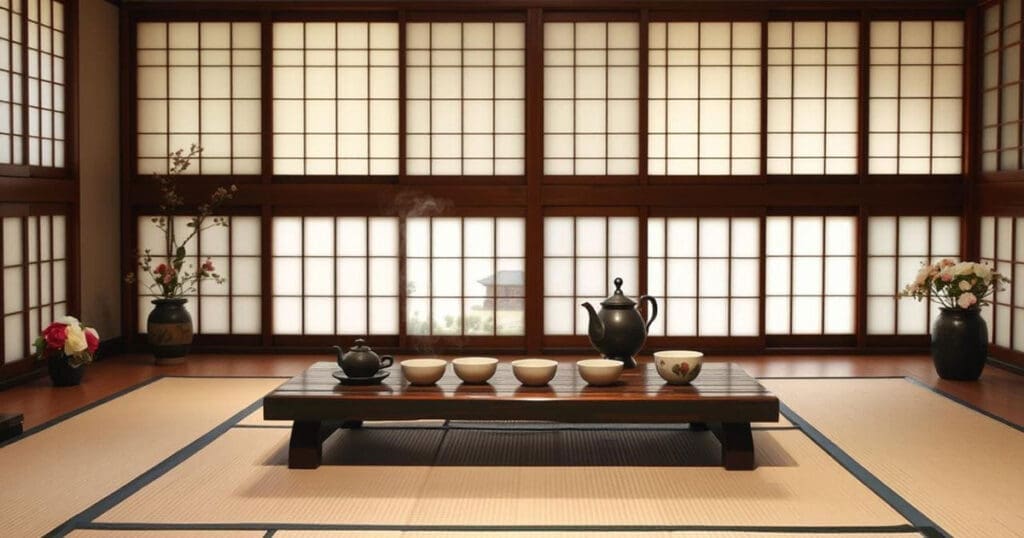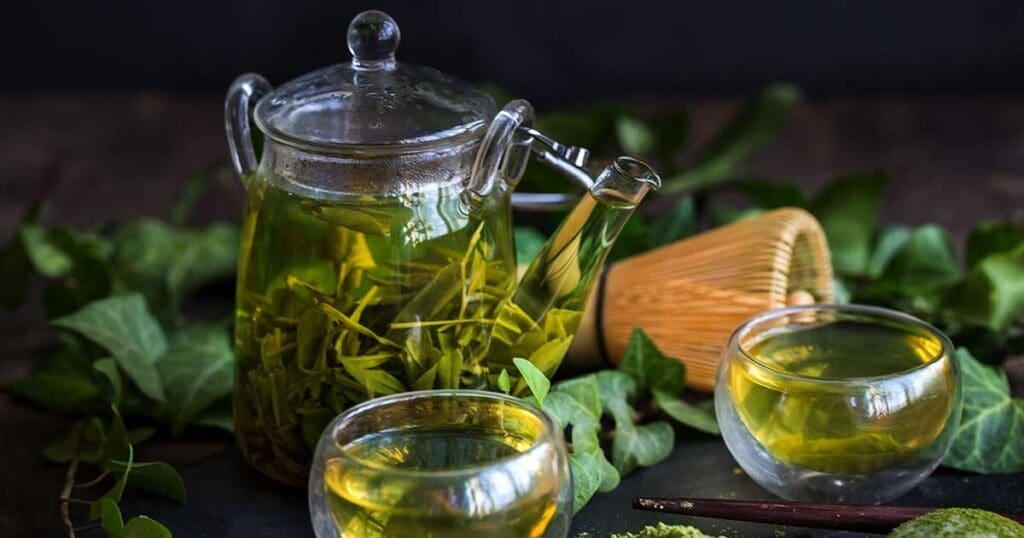We're excited to share our guide on Japanese tea ceremonies. It covers the rich history and key elements of this traditional ceremony. It's perfect for anyone interested in Japanese tea culture, whether you're a tea lover or just curious.
We'll explore the cultural significance and history of Japanese tea ceremonies. From Zen Buddhism's origins to modern changes, our guide will deepen your understanding. You'll learn more about Japanese tea culture and the ceremony.
Our aim is to give you a full grasp of the Japanese tea ceremony. This way, you can appreciate and join in this tradition. Whether you're into history, cultural significance, or just want to know more, our guide is here for you.
Key Takeaways
- Understanding the history and cultural significance of Japanese tea ceremonies
- Appreciating the role of Zen Buddhism in shaping Japanese tea culture
- Learning about the essential elements of a traditional Japanese tea ceremony
- Exploring the modern adaptations of Japanese tea ceremonies
- Discovering the importance of harmony and respect in Japanese tea culture
- Gaining a deeper understanding of A Guide to Japanese Tea Ceremonies and Japanese tea culture
The Rich History of Japanese Tea Ceremonies
The Traditional Japanese tea ceremony has a long and fascinating history. It spans centuries and has a deep impact on Japanese culture. We will explore its origins and evolution, showing how it has shaped Japanese traditions.
Origins in Zen Buddhism
The ceremony started in Zen Buddhism as a meditation tool. It was meant to connect people with nature. The principles of Zen, like mindfulness and simplicity, greatly influenced it.
Evolution Through Japanese History
Over time, the ceremony evolved due to social and cultural changes. It became a key part of Japanese culture, going beyond Zen Buddhism.
Cultural Significance Over Time
The ceremony has deeply influenced Japanese culture. It's not just a ritual but a way of life. It teaches harmony, respect, and tranquility.
| Period | Event | Influence on Tea Ceremony |
|---|---|---|
| 9th century | Introduction of Buddhism | Origins of the tea ceremony |
| 16th century | Sen no Rikyu's influence | Development of the traditional tea ceremony |
| 20th century | Modernization of Japan | Evolution of the tea ceremony to adapt to modern times |
Understanding the Philosophy of Tea Ceremonies
Japanese tea ceremonies are deeply rooted in philosophy. The Japanese matcha ceremony celebrates mindfulness, respect, and harmony. It's a spiritual practice that encourages being present and appreciating nature's beauty.
The art of tea is more than just drinking matcha. It's about the whole experience. This includes the careful preparation, the deliberate movements, and the attention to detail. Tea ceremony etiquette is key to creating a harmonious and respectful atmosphere. Every action, from whisking the tea to bowing, reflects the ceremony's philosophy.
Some key aspects of the philosophy behind Japanese tea ceremonies include:
- Mindfulness: being fully present in the moment
- Respect: for nature, for the tea, and for the other participants
- Harmony: creating a sense of balance and unity among all elements
By embracing these principles, participants can connect deeply with themselves, others, and nature. Exploring Japanese tea ceremonies reveals their profound impact on our lives.
Essential Elements of A Guide to Japanese Tea Ceremonies
Japanese tea ceremonies have key elements for a meaningful experience. We'll cover the host and guests' roles and the importance of harmony.
The Tea ceremony equipment is crucial for a peaceful setting. Items like the tea scoop, whisk, and bowl are chosen for a perfect tea.
The Role of the Host
The host prepares the tea and welcomes guests. They select the Tea ceremony equipment and follow the Steps of tea ceremony for a smooth experience.
The Position of Guests
Guests must follow etiquette, like bowing. They wait to be seated by the host. Their position in the room is also important for harmony.
The Importance of Harmony
Harmony is key in Japanese tea ceremonies. It's achieved through nature, art, and human interaction. The Steps of tea ceremony aim to unite everyone.
Understanding these elements makes Japanese tea ceremonies more meaningful. Whether hosting or attending, following the Steps of tea ceremony and using the right Tea ceremony equipment promotes harmony.
| Element | Importance |
|---|---|
| Tea ceremony equipment | Creates a serene and peaceful atmosphere |
| Steps of tea ceremony | Promotes harmony and unity among participants |
| Role of the host | Responsible for preparing the tea and creating a welcoming atmosphere |
| Position of guests | Expected to follow etiquette rules and promote harmony |
The Sacred Space: Tea Room Architecture
In the Traditional Japanese tea ceremony, the tea room is a sacred space. It's designed to create harmony and tranquility. We'll look at the traditional design of Japanese tea rooms, including natural materials and symbolic elements.
The Japanese tea culture values the tea room for creating community and connection. The room is simple, uses natural materials, and has symbols that reflect the culture.

Traditional Room Design
A traditional Japanese tea room is simple yet elegant. It's small, with a low ceiling and a tatami-mat floor. The walls are made of wood or bamboo, and the roof is tiled with clay or ceramic.
Symbolic Elements
The tea room is filled with symbols of the Japanese tea culture. There's the tokonoma, a recessed area for a scroll or flower arrangement. And the chabana, a simple flower arrangement that shows the season.
Seasonal Considerations
The tea room reflects the changing seasons. In spring, it's filled with cherry blossoms. In summer, bamboo blinds cool it down. In autumn, incense scents the room, and in winter, a charcoal brazier warms it.
In a Traditional Japanese tea ceremony, the tea room is key. It offers a peaceful space for participants to connect with nature and each other.
Traditional Tea Ceremony Equipment
We explore the traditional tea ceremony equipment used in the Japanese matcha ceremony. This equipment is key to creating harmony and respect among those who participate. The main items are the tea scoop, tea whisk, and tea bowl, each with a crucial role.
The tea scoop, or Chashaku, measures the exact amount of matcha powder needed. The tea whisk, or Chasen, is vital for mixing the matcha into a smooth, frothy drink. The tea bowl, or Chawan, is where the matcha is made and served, adding to the ceremony's beauty.
In a Japanese matcha ceremony, the equipment is more than just useful. It symbolizes respect, harmony, and purity, core values of the ceremony. By understanding these items, participants connect more deeply with the tradition and the community.
Some key items in a traditional setting are:
- Tea scoop (Chashaku)
- Tea whisk (Chasen)
- Tea bowl (Chawan)
These items make the Japanese matcha ceremony special and meaningful. They add to the richness of the experience.
Mastering Matcha: The Heart of the Ceremony
Matcha is at the center of the Japanese tea ceremony. This ritual demands focus, respect, and balance. To excel, one must grasp the essence of matcha and its preparation.
In a traditional ceremony, the host must know how to handle matcha correctly. This includes picking top-notch matcha for its rich taste. Keeping matcha in the right conditions is also key to its quality.
Selecting Quality Matcha
Look for matcha that's full of antioxidants and has a bright green color. It should taste slightly bitter with a sweet note. Choose matcha from trusted Japanese farms for the best quality.
Proper Storage Methods
Matcha needs to be stored in a sealed container, away from light and heat. This keeps it fresh and flavorful. Storing it in the fridge helps it stay good longer.
Preparation Techniques
Preparing matcha is an art that needs patience and care. In a traditional ceremony, matcha is whisked in a zig-zag motion. This creates a smooth, creamy tea. It's served in a special bowl, and guests follow etiquette, like bowing and thanking the host.
Learning to make matcha well lets you enjoy the Japanese tea ceremony fully. With practice, anyone can host a ceremony filled with harmony and peace.
| Matcha Quality | Storage Method | Preparation Technique |
|---|---|---|
| High-quality matcha powder | Airtight container, away from light and heat | Whisking in a zig-zag motion, using a bamboo whisk |
Essential Tea Ceremony Etiquette
Exploring Japanese tea culture means learning its etiquette. This etiquette is key to the ceremony's respect and harmony. Every action in a Japanese tea ceremony is planned to bring unity and calm.
At a Japanese tea ceremony, knowing how to bow and handle bowls is important. These actions are crucial for a smooth and enjoyable time for everyone. Tea ceremony etiquette helps us appreciate Japanese culture more deeply.
- Proper bowing techniques, which demonstrate respect and gratitude
- Bowl handling protocol, which emphasizes the importance of mindfulness and attention to detail
- Guest responsibilities, which encourage active participation and engagement in the ceremony
Embracing these etiquette principles makes our experience richer. As we dive into Japanese tea culture, let's remember etiquette's role in building community and connection.
The Four Principles: Harmony, Respect, Purity, and Tranquility
Exploring Japanese tea culture, we see the Traditional Japanese tea ceremony is based on four key principles. These are harmony, respect, purity, and tranquility. They guide the actions and intentions of both the host and guests.
In Japanese tea culture, harmony means balance and unity in the ceremony. This includes the surroundings, utensils, and participants. Respect is shown through careful attention and mindful behavior. Purity is seen in the clean and simple tea room and ceremony. Tranquility is the calm state of mind it creates, letting participants focus on the moment.
These principles make the Traditional Japanese tea ceremony unique. They help us understand and value Japanese tea culture more. They also foster a sense of community and connection. Here's a quick look at the four principles:
- Harmony: balance and unity among all elements
- Respect: careful attention to detail and mindful behavior
- Purity: cleanliness and simplicity of the tea room and ceremony
- Tranquility: a state of mind cultivated through the ceremony

By understanding these principles, we can appreciate the beauty and importance of Japanese tea culture more.
Seasonal Influences on Tea Ceremonies
We explore how each season shapes Japanese tea ceremonies. The Japanese tea culture is deeply rooted in history and philosophy. The changing seasons add to the ceremony's atmosphere and meaning.
Seasonal influences are key to the tea ceremony experience. They help participants connect with nature and enjoy the beauty of each season. In Japanese tea culture, the seasons are more than just a setting. They are a vital part of the ceremony.
Spring Ceremonies
In spring, tea ceremonies are often held outdoors. They are surrounded by blooming flowers and greenery. This setting lets participants enjoy nature's beauty and the start of new life, a key theme in Tea ceremony in Japan.
Summer Practices
Summer tea ceremonies are held in cooler, shaded areas. They focus on staying hydrated and refreshed. The ceremonies use seasonal ingredients and decorations, showing off summer's unique qualities in Japanese tea culture.
Autumn Traditions
Autumn tea ceremonies celebrate the harvest season. They include fallen leaves and seasonal fruits. The ceremonies also feature autumn decorations and ingredients, highlighting Tea ceremony in Japan's rich cultural heritage.
Winter Customs
Winter tea ceremonies are held indoors, focusing on warmth and community. They use winter ingredients and decorations. This emphasizes the importance of togetherness and hospitality in Japanese tea culture.
Modern Adaptations of Traditional Ceremonies
As we dive into Japanese tea ceremonies, we see new twists making them more modern. A Guide to Japanese Tea Ceremonies sheds light on these changes. For example, the Japanese matcha ceremony now uses modern tools and techniques, keeping its traditional heart.
Modernizing matcha preparation and service is a big part of these changes. Tea houses now use electric whisks to speed up the process. They also mix matcha with new sweets and snacks, offering a fresh take on the ceremony.
Modern changes include:
- Modern tools, like electric matcha whisks
- New ways to enjoy matcha, like with modern sweets
- Keeping the ceremony's traditional feel, like in old tea rooms
These updates make the Japanese matcha ceremony more inviting to everyone. Exploring A Guide to Japanese Tea Ceremonies helps us see the value of keeping traditions alive while adding new flair.
Common Mistakes to Avoid During Tea Ceremonies
Exploring Japanese tea culture is fascinating. It's key to know the common mistakes to avoid during tea ceremonies. Following the etiquette makes the ceremony respectful and harmonious. Being aware of these errors can make the experience better.
Through studying traditional texts and research, we've found common mistakes. These include behavioral errors like wrong bowing and technical mistakes like bad matcha preparation. Also, etiquette oversights like not respecting the host or guests can ruin the ceremony's balance.
Behavioral Errors
- Improper seating or posture
- Incorrect bowing techniques
- Disrespect towards the host or other guests
Technical Mistakes
- Incorrect matcha preparation
- Improper handling of tea ceremony equipment
- Not following traditional tea ceremony protocols
Knowing these common mistakes helps us avoid them. This way, we can enjoy a more authentic and respectful Japanese tea culture experience. As we continue to explore, we'll learn more about tea ceremony etiquette and Japanese tea culture.
| Mistake | Correction |
|---|---|
| Improper bowing techniques | Practice traditional bowing methods |
| Incorrect matcha preparation | Follow traditional matcha preparation protocols |
Conclusion: Embracing the Way of Tea
As we wrap up our exploration of the Japanese tea ceremony, we invite you to dive into the "way of tea." It's more than just rituals; it's a way to live with harmony, respect, purity, and peace. These are the core values of this ancient art.
Exploring Japanese tea culture teaches us to slow down and enjoy the moment. You can experience this by attending a tea ceremony or creating your own at home. The lessons from the tea ceremony can make your life richer and your relationships deeper.
So, let's raise our cups and celebrate the wisdom of tea masters. A Guide to Japanese Tea Ceremonies has given us a good start. But the real journey into Japanese tea culture is yours to take. Embrace the way of tea and discover a world of calm, balance, and deep appreciation for life.
Disclaimer:
Some of the links on this site are affiliate links, which means I may earn a small commission if you make a purchase through them, at no additional cost to you. Thank you for supporting Brew Sip Repeat!




Facebook Comments